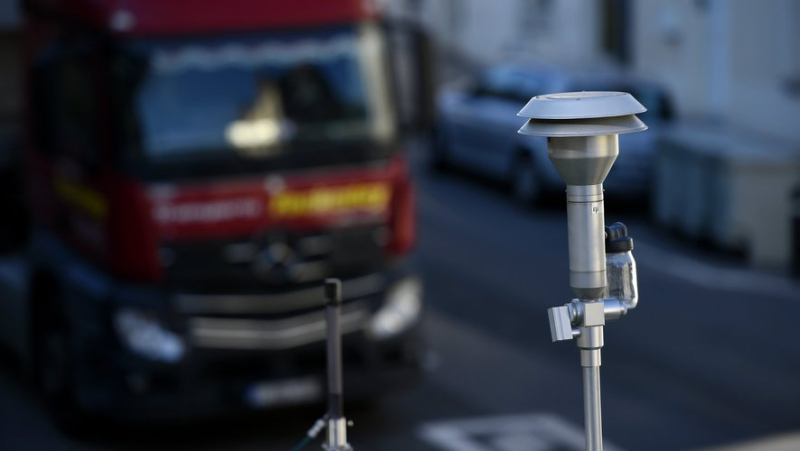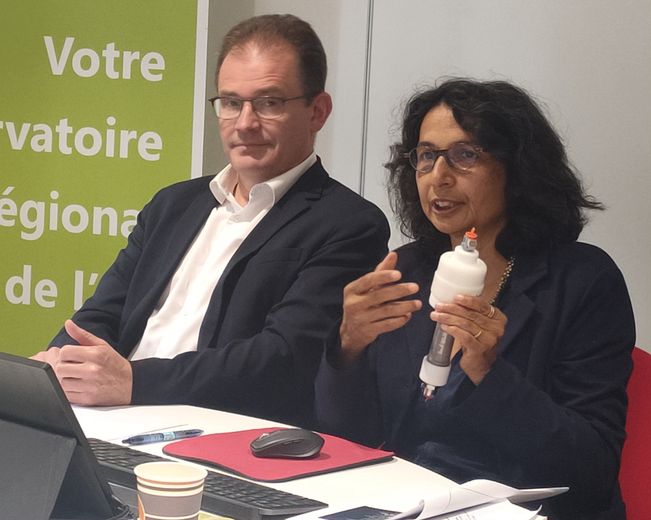Endocrine disruptors identified in the air we breathe: Atmo Occitanie launches a study to quantify them

Le capteur a identifié 46 perturbateurs endocriniens sur les 56 recherchés par Atmo Occitanie. MAXPPP – ALEXANDRE MARCHI
Nous absorbons des perturbateurs endocriniens, mais dans quelles proportions et avec quels effets sur notre santé ? Une expérimentation a permis de mettre au point une méthode de mesure, qui sera déployée sur cinq sites de la région durant trois ans. Une collecte de données indispensables aux chercheurs en santé publique.
What do we breathe, at the rate of 15,000 liters of air per day and per individual? ? Nitrogen dioxide, fine particles which we know were responsible for 238,000 deaths in 2020, according to figures communicated last year by the European Union, and what else?? PFAS, endocrine disruptors ? Neither have ever been measured in outdoor air and such data studied regarding their impact on our health. However, they "are a reality in the air compartment", elements including, " ;through the air we breathe, we charge ourselves", says Thierry Suaud, administrator of Atmo Occitanie.
The regional air quality observatory presented, on Tuesday, the results of an exploratory study, which "demonstrates" the presence of endocrine disruptors, these chemical substances disrupting the hormonal functioning of living beings, in the atmosphere. A study limited to Toulouse, carried out from June 2022 to August 2023, which, with the help of a laboratory at the University of La Sorbonne, in Paris, < em>"allowed us to develop a method" to capture, isolate and then quantify these substances, explains Dominique Tilak, director of the association. Placed a few meters above the ground, this "cartridge" specially developed took 19 samples over the period, particles in its lower part, gases in the upper part, analyzed by chromatography.

Dominique Tilak and Thierry Suaud present the sensor developed for the exploratory study. Atmo Occitanie
A first in France
"We searched for 56 molecules of endocrine disruptors, continues Dominique Tilak. And we collected 46 of them. 34 of them were quantified in at least 75 % of the samples. 25 over the entirety, that is to say the whole year", observes the engineer, in the very urban environment where the sensor was implanted. None of the referenced families escapes it, phthalates, PAHs, alkylphenols, insecticides and other synthetic musks, which "haunt" cosmetic products and detergents, furniture wood, varnishes, assembly plastics, packaging of all kinds and other flame retardants. A real "cocktail" with unknown effects, "we don’en is that at the beginning", recalls Thierry Suaud, as for our knowledge of the subject. "Where we were he thirty years ago regarding water", compares Dominique Tilak.
The idea is now to go further and be able to provide health researchers with masses of denser data to analyze. Over a longer period, "three years", in different environments, "urban, rural and the industrial past", supplementing with PFAS – the so-called eternal pollutants –, thanks to the methodology developed during the experiment.
Five equipped sites
This study, a first in France, was "launched in March"by Atmo Occitanie, thanks in particular to State funds, required by the Council of State to stop neglecting the subject. Five locations were equipped: the metropolises of Montpellier and Toulouse, co-financing, Alès (Gard) to assess the imprint of an industrial and mining past, rural sites in Aude (wine ) and Haute-Garonne (agricultural), targeted for pesticides and insecticides.
"We want, lists the director of Atmo Occitanie, identify and quantify the presence of endocrine disruptors in ambient air, analyze variations over the course of the year, evaluate, ultimately, the risks and in particular the cocktail effect. It will also be an environmental monitoring indicator" : which products appear, disappear, densify and fade away, like these PCBs, banned since 1987 but still present in& ;hellip; 80% of samples.
The first results will be presented in a year. However, for conclusions regarding health and possible regulatory decisions, we will have to wait longer.
I subscribe to read more




